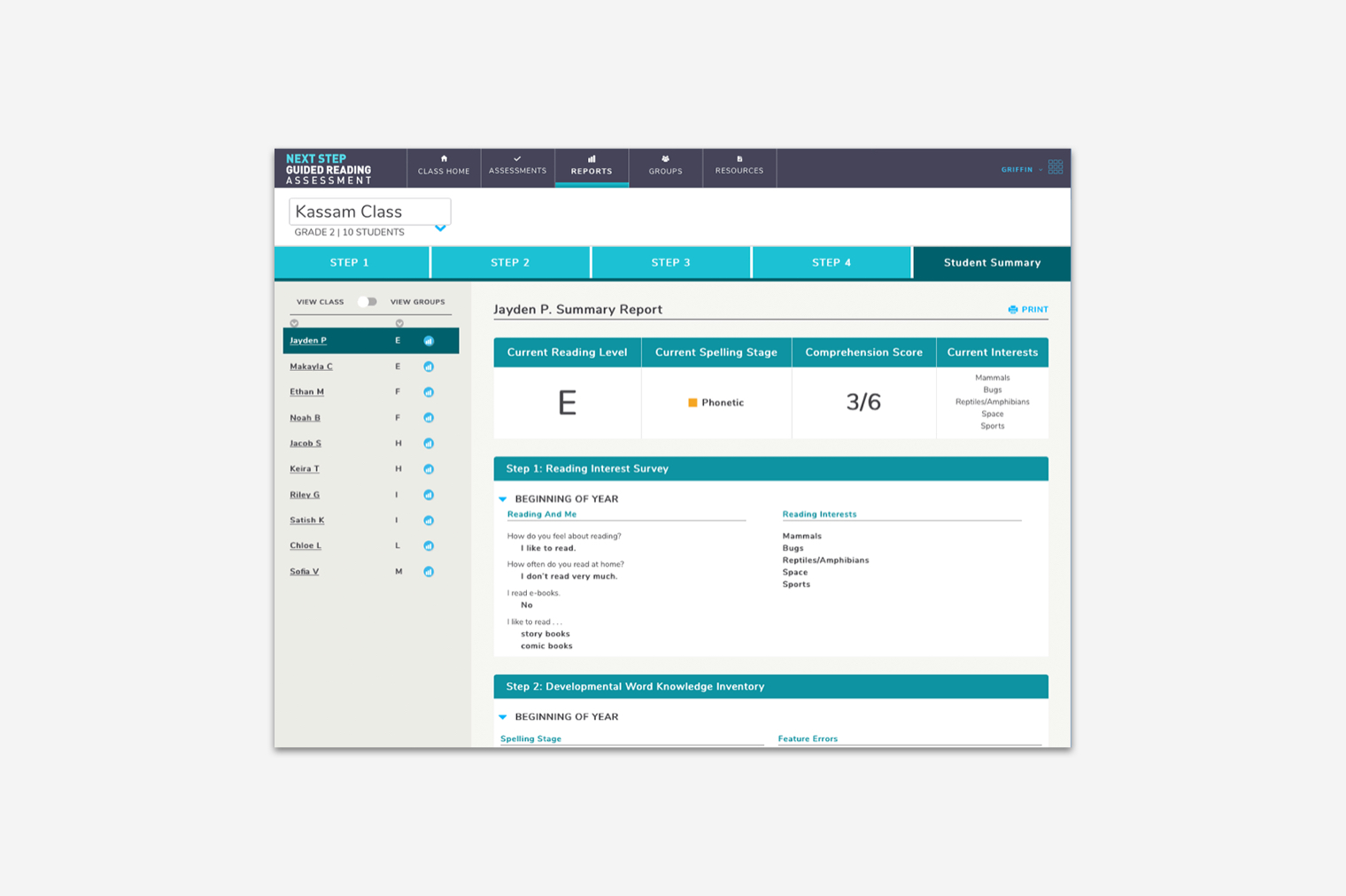

Understand key benchmarks.
View trends and track progress of classes, grades, and schools to provide student-focused support for your district.
Data Management
Access data quickly.
Principals can view summary progress reports and literacy coaches can use reports to provide teachers with reader-focused supports.
Data Management See Inside 3: Classroom View" />
See Inside 3: Classroom View" />
Identify patterns for support.
Classroom data and report trends track students' progress and instruction based on students’ skills and comprehension.
Data Management
Individual Student Reports
Use these dynamic summaries of student data in conferences with caregivers and meetings with instructional team members.
Data Management
Plan differentiated instruction.
Group students by reading stage, level, and developmental need to target your instructional focus and build their comprehension.
Data Management
Utilize professional development tools.
Access all K–6 resources, including assessment forms, lesson plans, program materials, and classroom videos.
Assess, Decide, Guide
 Content Card 1: Assess" />
Content Card 1: Assess" />
Pinpoint your teaching focus, select texts, and plan and teach powerful lessons in four easy steps.

Use data to determine students’ reading levels, form instructional groups, and create effective action plans for student learning goals.

Access professional development tools, resources, and videos online to plan personalized instruction with lessons to match reading stages.

Get to know your readers in
four easy steps
1 . Reading Interest Survey (whole class)
Uncover students’ reading interests to match readers to just-right texts.
2. Word Knowledge Inventory (whole class)
Determine skills in phonological awareness and phonics to inform your word study instruction.
3. Comprehension Assessment (whole class)
Evaluate students' higher-level thinking skills and identify students who need immediate support. (For Grades K–2, this is administered as a read-aloud assessment.)
4. Reading Assessment Conference (one on one)
Obtain precise data on phonics, word recognition, fluency, and comprehension to determine instructional levels and identify skills and strategies to target during guided reading lessons.